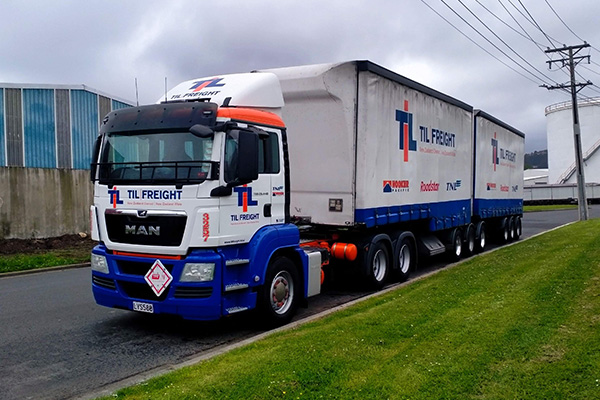How reduced idling helped TIL Freight improve its fuel efficiency
How reduced idling helped TIL Freight improve its fuel efficiency
Thanks to EROAD insights, Christchurch drivers drop fleetwide idling by almost 70 percent, resulting in improved fuel efficiency
TIL Freight is a New Zealand provider of transport and logistics services, including general freight, containerised goods, and heavy haulage. At the start of 2020, Divisional CEO of Transport, Dallas Vince was brought in to streamline operations across its 21 branches and look for efficiency gains. He put out an open call to TIL’s team, including Guy Gibb, weekend terminal manager of the Christchurch branch.
“He said to us, ‘Give me anything and everything you can think of to improve the business. No matter how silly the idea may sound, I want to hear it. And anyone in the company at any level can have an idea.”
Guy, who had worked on fleet idling and overspeeds with his previous employer, was eager to explore how TIL could use EROAD to take a closer look at their own data: “We already monitored overspeeds for incident investigations, but we didn’t put that into the bigger picture of how the company is performing, linking overspeeds and idling with fuel efficiency.”
Idling, as it turns out, is a leading factor in fuel waste. An EROAD study found that, on average, 7 percent of customers’ fuel consumption is burned in non-productive vehicle idling. (Productive idling such as that required to run compressors, cranes, and other auxiliary equipment is exempt from this figure.)
Since implementation, TIL Freight has experienced the following improvements
68%
Reduced Fleet Idling
48%
Reduced Overspeeds
37%
Reduced Fuel Transactions
An opportunity for improvement
EROAD’s idle reports can identify instances where fuel has been wasted through excessive or unnecessary idling or a poorly tuned vehicle. After pulling a report, Guy saw that most idling was happening in their container group so decided to start there.
TIL’s fleet includes two types of container vehicles: skeleton trailers, where the container is lifted on using a forklift or combi-lifter, and swinglift trailers, which have movable lifting arms that make a forklift unnecessary.
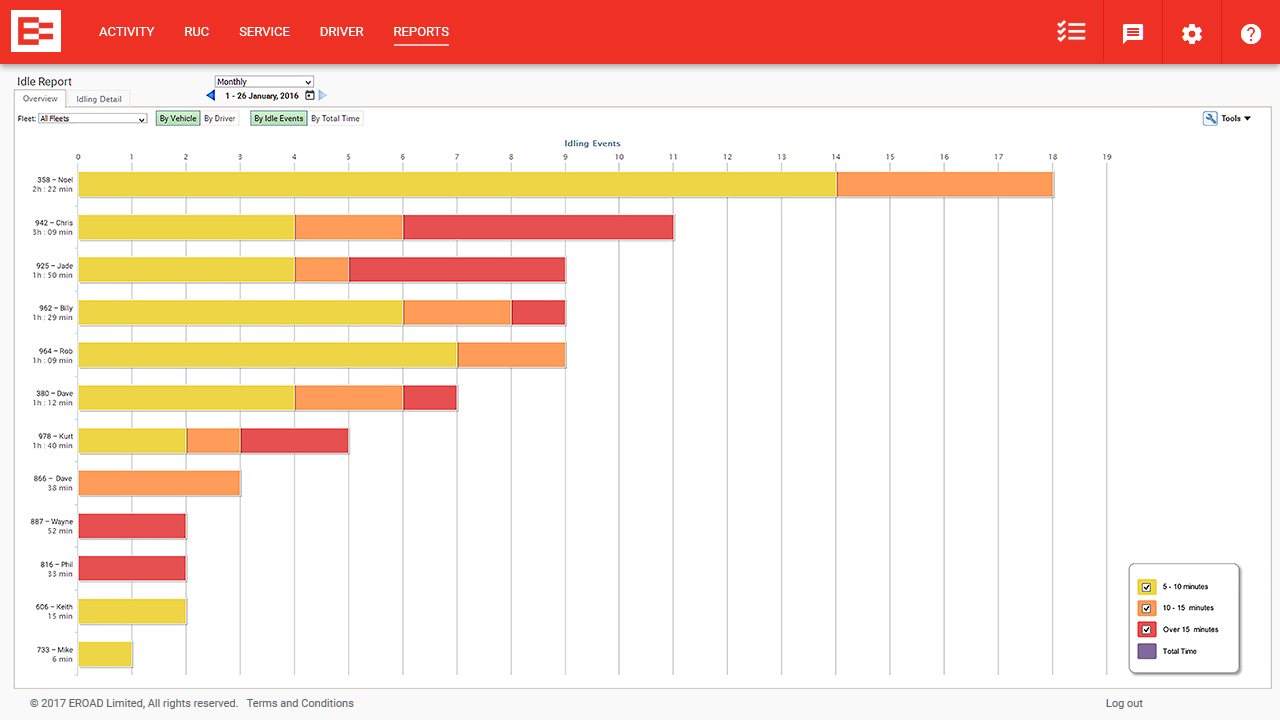
Until the late 2000s, most swinglifts relied on the vehicle to power them, requiring the driver to leave the ignition on. Now, nearly all have their own auxiliary motor, but drivers who had worked for TIL since those days were still in the habit of leaving their trucks idling, and the EROAD data showed that. While compliance dictates one-on-one driver management regarding overspeeds, the topic of idling hadn’t been discussed with drivers before.
Rather than simply telling them to turn their trucks off, Guy decided to draft a pilot programme proposal. With the help of all the container division managers, he developed an inclusive consultation process and reviewed TIL’s standard operating procedures, which contained nothing specific about idling. From there came the idea of hosting an informal Toolbox Talk, with a one-pager explaining the cost of idling to the business.
“And it wasn’t just the managers, because not all managers have driven a truck before. To develop a better understanding, we also did a lot of talking with drivers themselves,” Guy says. “We went out with drivers in the trucks, walked through the process, and went over the exceptions.”
Setting the stage for self-directed change
Then, without fanfare, TIL transport analyst James Beckwith put the EROAD Leaderboard up on the breakroom TV.
Leaderboard is a unique EROAD feature that gives each driver a star rating out of 5 based on performance criteria including overspeeds, idling, and fuel efficiency, but without spelling out exactly what each driver did or didn’t do. Those ranking in the top 10 percent earn a five-star rating, and this blind benchmarking can compare all EROAD drivers across your fleet, New Zealand – or Australasia.
“I didn’t want to name and shame people,” Guy explains. “The idea was just to put it up there, not say anything, and see if people would naturally lift themselves.”
TIL Christchurch quietly took this laissez-faire approach for five weeks and saw an across-the-board improvement: Between July and September 2020, fleet idling dropped by more than 68 percent and overspeeds by 48 percent. Many of the container division’s double-shifted units went from 10 to 15 hours of idling per week to fewer than five.
“We had a dramatic improvement in driver ratings on EROAD as well. It created that positive competitive atmosphere where guys would come in on Monday really keen to see what their rating for the previous week was.”
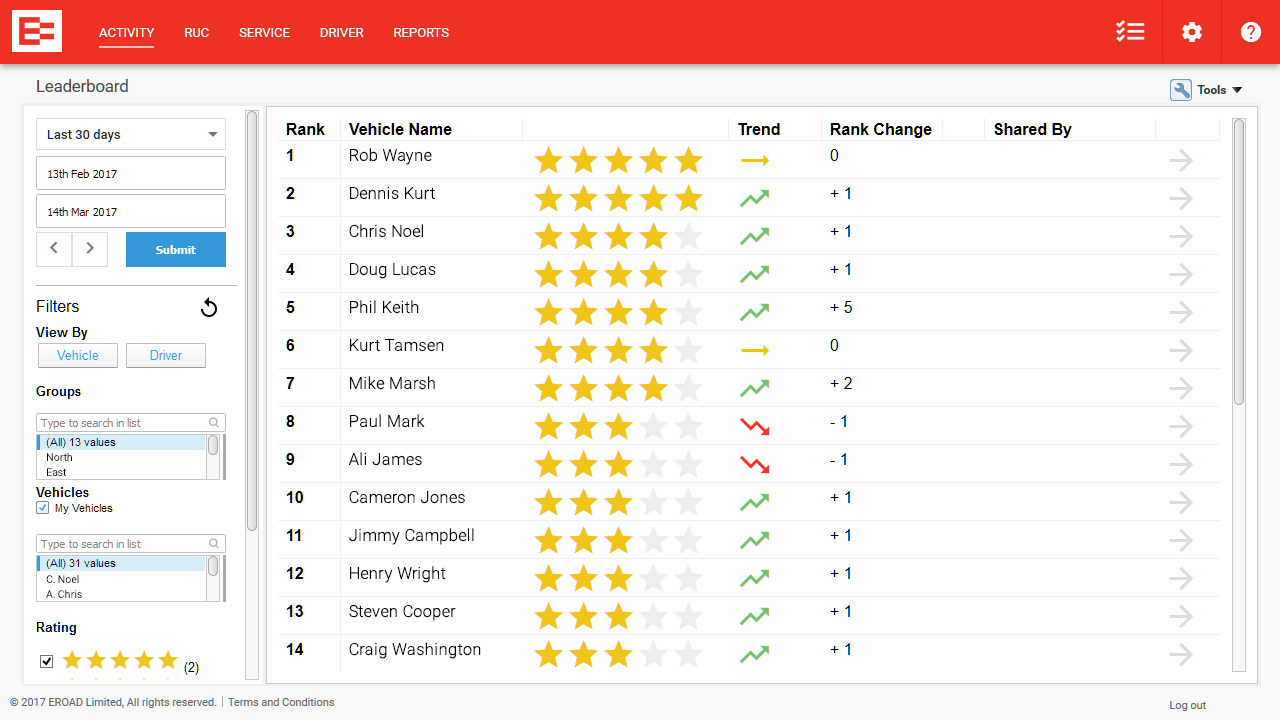
Digging even deeper
Using EROAD’s advanced analytics, Guy compiled fuel efficiency data to establish a benchmark and identify which trucks were performing poorly and the possible reasons why. That data, shared at a recent branch meeting in Dunedin, told the team to look at three things: “One, is it driver behaviour that’s leading to poor fuel efficiency? Two, is it the wrong truck for that job? Or three, is that the truck is old and needs to go?”
On that first point, the simple act of sharing idle reports in the breakroom induced a drop in linehaul idling that translated into increased fuel efficiency at the Christchurch branch. Compared to July 2020 and earlier, fuel transactions in September dropped by more than 37 percent as a direct consequence of the reduction in idle time.
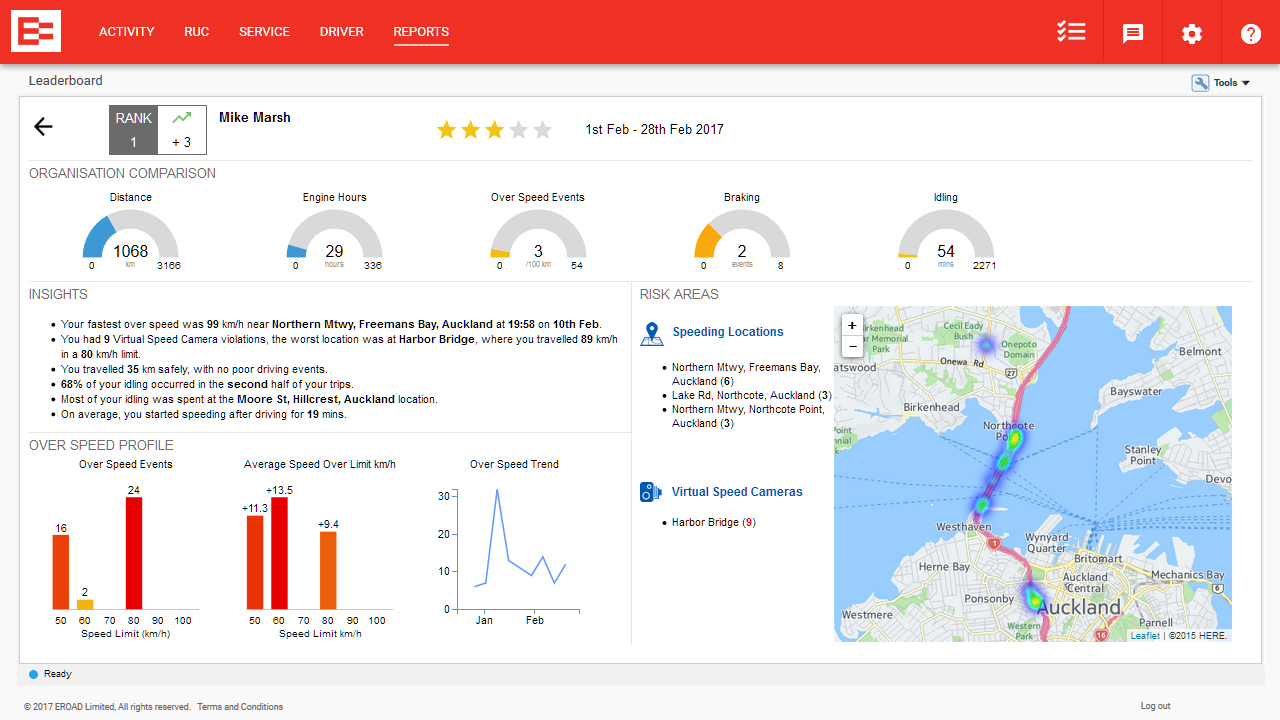
“The plan is to showcase what the Christchurch branch has done to other branches. I’ve put it out there that if you want to emulate what we’ve done here, just get in contact and we’ll set it up. I’ve already had three branches do that.”
The road ahead
Guy plans to send idling data to all the branches at the end of each month. “Dallas will be able to see it, and he’ll be able to see straight off the bat which branches have adopted some change and which ones haven’t.
“I’ve sent the three branches that have contacted me an information pack containing SOPs, the toolboxes, data for their specific branches, and a help guide on how to use EROAD and set up scheduled reports and things like that.
“We don’t frame it like, ‘We need to hit these goals; you need to talk to this driver ASAP.’ It’s more, ‘Here are the tools EROAD gives us. This is how to use them, go and use them, and if you need help, come talk to me. And that’s what they’ve done.”
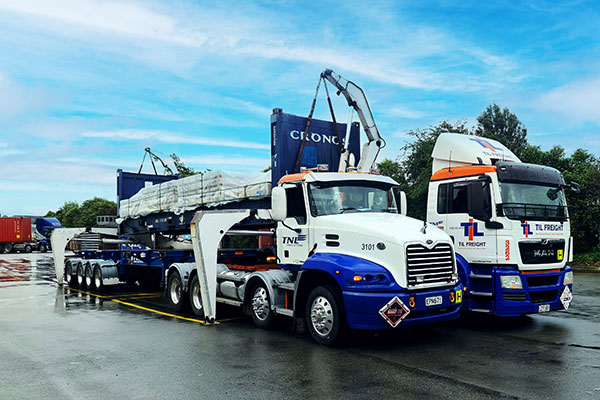
In summary, Guy says, “EROAD gives you a broader understanding of the effects of idling and speeds on different elements of fleet management.”
To find out how EROAD can help your fleet tap into its metrics to drive cost efficiencies, contact your EROAD account manager today.

